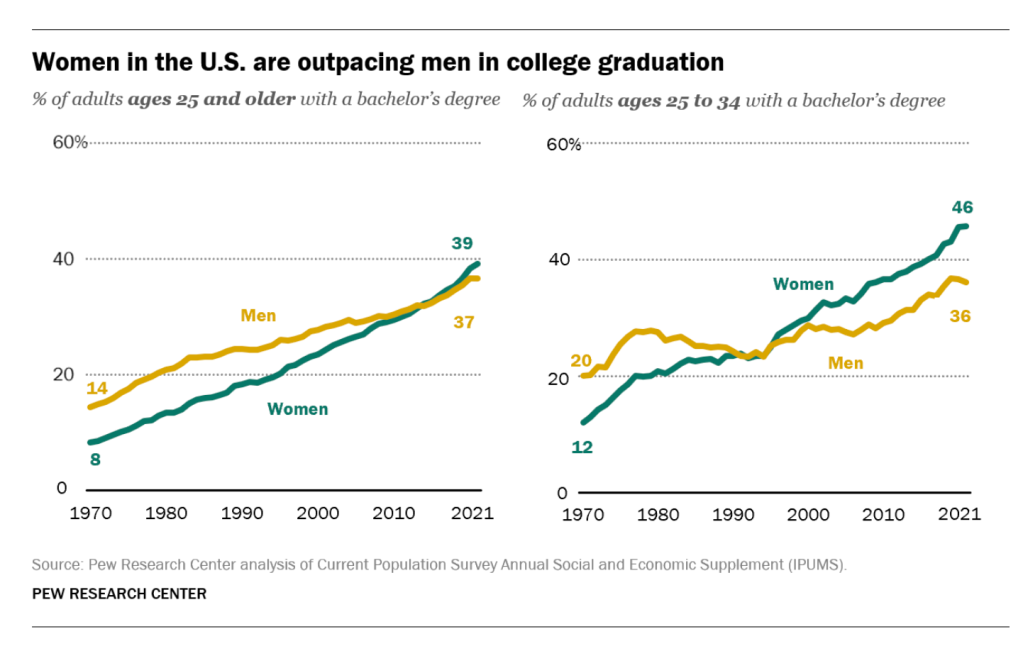Coupling.
As a society, we find ourselves at an odd juncture. The epic changes in family, career, and gender roles over the last 50 years have hit a few speed bumps.

An article in the Economist entitled, “Tinder drove me to freeze my eggs,” by Anna Louie Sussman caught my attention. The tongue-in-cheek accusation against the dating app, Tinder brought a smile to my face. The app is not really to blame for her choice to spend $10,000 to freeze her eggs extending her ability to procreate for several more years. To her credit, Ms. Sussman does take responsibility for her own actions. She thought there would be more time. More opportunities. More guys to pick and choose from in her later days. But it was not to be.
As a society, we find ourselves at an odd juncture. The epic changes in family, career, and gender roles over the last 50 years have hit a few speed bumps. Obsessively curious and having already authored two pieces on the Pope’s “demographic winter”, Ms. Sussman’s words gave me pause.
She rightly points out there is a dearth of eligible men. “– that is, men with degrees. In our grandparents’ generation, men outnumbered women at university: in 1960 there were 1.6 men graduating for every woman in America. Then came the second wave of feminism. Today there are three men for every four women with degrees. Put simply, there aren’t enough highly educated men to go around.”
I am fond of graphs and charts. The changes in college attendance by women have led to the dating pool imbalance, as Ms. Sussman highlights. But also the impact is felt on overall birth rates. The first graph below depicts the shift in college graduation while the bottom graph looks at “children per woman” in several developed countries and the world.


It doesn’t require a degree in the STEM fields to understand the impact of slower and lower procreation. Note 1970 as a watershed year. But according to Pew Research, Ms. Sussman’s desire to have a partner and a child puts her in the minority.
In a November 2021 Pew Research study, a majority (56%) of non-parents younger than 50 who say it’s unlikely they will have children someday say they just don’t want to have kids. Childless adults younger than 40 are more likely to say this than those ages 40 to 49 (60% vs. 46%, respectively). The stats suggest no differences by gender.
Among childless adults who say they have some other reason for thinking they won’t have kids in the future, no single reason stands out. About two in ten (19%) say it’s due to medical reasons, 17% say it’s for financial reasons and 15% say it’s because they do not have a partner, Ms. Sussman’s category. Roughly one in ten say their age or their partner’s age (10%) or the state of the world (9%) is a reason they don’t plan to have kids. An additional 5% cite environmental reasons, including climate change, and 2% say their partner doesn’t want children.

As a self-proclaimed feminist, Ms. Sussman reluctantly admits to money’s role in shaping her approach to dating. She writes, “one lesson I absorbed from losing my father when I was young is that relying on a man’s income is unwise. I’ve always supported myself, and haven’t consciously sought out rich men. ” The writer sought financial stability over the biological realities, as she knew them.
Bouncing back to her dating pool (Tinder) issues, she writes further, “Jon Birger, author of “Date-onomics: How Dating Became a Lopsided Numbers Game”, reckons that college-educated men, knowing they have plenty of options, feel less pressure to commit to a serious relationship in their 20s and 30s.” Truly, if women have a preference for high-earners, it should not be a surprise to find men choosing to spend several additional years developing their careers to spruce up their curb appeal. She references “50-something male executives who write on their dating profiles that they’re finally “ready” to build a life with someone.” Maybe so.
As both writer and subject, Ms. Sussman’s unvarnished writing style with lines like “Sitting in the (egg freezing) clinic, I felt like I was in a dystopian rom-com” and “I’d invested at least $10,000 in freezing eggs that I fervently hoped never to need to use” smacked of a real, honest and heartfelt uncertainty. But I found the rhetorical reach of her article’s tagline the most telling, “I paid $10,000 to escape relentless swiping. Was it worth it?” We had come full circle returning to an economic question.
Obviously frustrated with dating, the writer uses her exceptional mind to boil her issue down to the only imperative she can cling to in the unending roundabout of uncertainty she has faced. What about my $10,000? I can’t find fault in her logic.
Oh, I see you are wondering how I knew she had an exceptional mind? I went to her website and read her writing for the last decade or so. Consider doing the same annalouiesussman.com, she is very insightful.
However, economics does not seem to be at the heart of the demographic downdraft or Ms. Sussman’s partnership drought. Below is a chart of US adult living situations. A serious trend has emerged. While cohabiting has doubled over the last 30 years, “unpartnered” has risen by 9 points. A staggering increase. Especially, if economics lay at the heart of the matter. Flying solo is expensive. I believe something bigger is lurking in plain sight.
Let me share a story and tug on reality’s coattails for a few minutes.

In 1979, I was a freshman at Texas A & M University in College Station, Texas. The “A” in A&M stands for agricultural and the “M” for mechanical. No surprise, the college was rated off the charts in Engineering, Agriculture, and Veterinary. The 15,000 member student body reflected equal parts big-city kids and country boys and girls from tiny towns barely on the map. Those who grew up in small rural towns gave the college a practical, down-to-earth feel.
One night after a couple drinks with a pretty small town lady, named Julie, I got the lowdown. She explained the reality of college aspirations for future ranchers and farmers. Her A&M education was pivotal in providing critical knowledge and innovation to take back to their land and livestock. Squeezing out pennies from agricultural operations meant survival for that those who scratched a living out of the land. But more importantly, Julie was at A&M to find her husband.
Small town folks don’t waste words. I wasn’t the farmer type, so our evening served as a pleasant distraction for the lady. Julie’s high school graduation class was 62 young people. She had dated or eliminated all her local options for a mate. For her, College Station drew the largest congregation of eligible, educated, and age-appropriate males that she would ever encounter smashed into one zip code. In 1979, that amounted to a transient and growing male population of 8,000 for Julie to comb through in her four years.
Julie would have a few frogs to kiss before finding her prince. Sorry, I meant farmer.
Ladies and gentlemen, I believe you see my point. While attending college, you are exposed to the largest gathering of like-minded (you chose the same university), educated, and age-appropriate members of the opposite sex, that you will ever encounter. A literal buffet of choices. Kids from small towns knew the numbers game. Kids from big cities suffered the illusion of plenty given the size and population of their metros. However, those teaming masses have not been screened and vetted by a college admissions board. Has the lightbulb blinked on yet? Needing to swipe left or right in college is not an issue.
Combine the largest cluster of eligible mates in your college years with the Female Age-Related Fertility Decline as reported in a The American College of Obstetricians‘ study, and big trends emerge. Ladies, aging or time is not your friend.
Female Age-Related Fertility Decline – The American College of Obstetricians and Gynecologists Committee on Gynecologic Practice

The decline of female fertility does not affect a man’s ability to marry a woman of peak childbearing age, years younger than him. Dating and marrying down in age is de rigueur for the guys. However, ladies, I believe you see which way the data wind is blowing. Your biological clock is ticking and you have a window of opportunity that closes while you are building your career. A tug of war ensues.
Dating apps are an attempt to adapt big data to our most vulnerable needs. Heralded as a unique, reliable filter and a way to connect for romance and sex, these apps fail to deliver viable long-term candidates. To have children with a guy, the gentleman needs to be a stayer, not a player. Where are the college admission boards when we need them most?
Speaking to the 30-something ladies with a short biological fuse, get creative. Use Alumni and service organizations to prune your choices. Church. Friends. At 47, I went back into the dating pool with four teenage kids in and out of my house. I might be handsome, but four teenage kids? I was a lemon looking for a lemonade stand.
My college admission board took the form of a professional matchmaking service called “It’s Just Lunch”. I paid them to set me up with eligible and suitable ladies that could tolerate my lemon status. I met ten extraordinary women, the first of which, I dated for almost a decade. My match was a hidden gem of a human being. Does that make me sad and desperate to use a matchmaking service? I don’t think so. Actually, my time was better spent working and providing for my kids than swiping on an app.
As I put the final touches on this piece, a highly successful entrepreneur, Kim Kaupe grabbed my attention. A huge fan of Shark Tank, I remember her episode. She is a go-getter. Strangely, I found her TikTok page with words of warning to the ladies. I reached out to her on an IG DM asking about the veracity of her comments. Was she serious? Two days later, an IG post appeared. Her words,
“Lean In,” “Girlboss” & hustle culture was toxic. Yep, I said it. I created 2 successful companies but never had balance. Hear me out…
For example:
– I missed family vacations
– I skipped friends’ weddings & birthday parties
– I dated less and worked more because that was “rewarded”
The “Girlboss” wreckage has been a realization that I’m now playing catch up.
Only some things I can’t get back:
– The weddings are over.
– My grandparents have all passed.
– Friendships have evolved with kids & families.
I hope the next generation leaders remember to LEAN out. Work will always be there. Time, family & friends will not.
She is 36 with no kids learning how to live with someone. Her words.
To fully understand Kim’s words, I had to grasp feminism, from the 1960s, repackaged as female freedom in an empowered capitalist style.
THE #GIRLBOSS feminism is female capitalism on steroids. Coined by Nasty Gal founder Sophia Amoruso, the term signified feminism in which everything, including sex, took a back seat to economic success. This model swapped a woman for the man at the top of the corporate food chain accountable to no one but herself. Hence, the moniker GirlBoss.
I have made a study of critical thinking in a predictive sense. I have formed a falling domino theory of actions and reactions. So, I am suitably stunned that women in our society would embrace a “Lean In,” “Girlboss” & hustle culture narrative so contradictory to science and data analysis. This feminist reboot strategy neglected to highlight the logical flaws thereby trapping women in a very harsh and unforgiving trick box under the banner of freedom.
Female fertility is an ancient science. In the best of biological circumstances, the window for having kids closes quickly with a peak age of 32. However, extended use of birth control pills is well known to make procreation more challenging, not less.
Plus, most ladies are looking for a suitable long-term partner for said procreation. The mating numbers game GREATLY favors making that crucial selection in college between the ages of 18 to 25 if you include grad school. My advice included the guys. My two sons are at Texas A&M University at the moment. The University has over 50,000 students forming a very large dating pond. I gave my boys the same speech. My oldest son, and co-founder of this media site, is graduating & commissioning into the Army in May ’23. He is engaged to a wonderful girl from a little town in East Texas. What are the odds?
The big “why” question remains. Why did capable and intelligent young women fall for this nonsensical “Girlboss” narrative? Let me flip the entire "why" question on its head. Why did capable and intelligent young women feel the necessity to adopt this nonsensical “Girlboss” narrative? The answer is brutally simple. Guys. We failed to value our daughters as our equals. Yep, like Ms. Kaupe’s omission above, I said it.
First, ignorant narratives like “Girlboss” only take hold in the vacuum of dystopian neglect. We, men, who are largely in charge of our culture and society failed to value the contribution of the best and brightest of our daughters. Their intelligence, creativity, drive, and vision were relegated to a second-tier existence because they were girls. #Girlboss was a female insurgency’s response to oppression. A misguided response, but a response to oppression nonetheless.
Second, we (men) failed to value our daughters as the future cradle of humankind. Their “peak fertility”, and unique ability to carry, deliver, nurture, and mother our future generations is a precious national resource. Looking at the Oxford chart above of “children per woman” tells the epic tale of our failure. 50 years of “demographic winter” caused by men’s inability to highly value women and protect their “unique and essential” contribution to our society.
Men forced women to balance career, independence, and financial success with motherhood without substantial allowances for the gravity of the task of family and childbearing. Marriage and children became a career handicap for our daughters. We failed them. They revolted. What did we expect? These ladies are every bit our equals. They wanted a seat at the table.
Women pushed back with the #Girlboss, “lean in” or hustle culture. Our daughters nailed the disease but not the prescription for necessitating change. I agree with Ms. Kaupe, the #Girlboss cure was and is toxic. However, gentlemen, the capitalist playing field in America must change.
Let me end on a very hopeful note. Ms. Kaupe is engaged. And, I venture to say that our future would be in better hands if she had a little girl, just like her mother. A boy is good too.
Additionally, I wish Ms. Sussman only the best in her life, romance, and writing endeavors. You can count on me to be among your readers in the future.
Until next time. Travel safe my friends.

